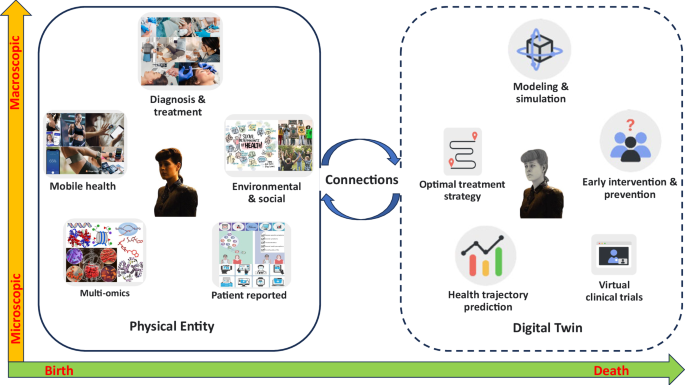Assessing quality of health care in the context of patient satisfaction from patients’ perspective among a physical therapy and rehabilitation unit | BMC Health Services Research

Recently by the improvement process of health care delivery system the rising star is patient’s opinion. Patient satisfaction is the state of pleasure or happiness that the patients experience while using a health service. Thus, patient care is the basic function of every health service provider, it is one of the standards to measure the efficiency and effectiveness, where the efficiency of a hospital is associated with the provision of service delivery and quality care. It can be said patient satisfaction is the actual evidence of the effectiveness of the healthcare services providing administration [9]. Also the authors conclude that patient satisfaction is a multidimensional concept that relates to the nature of medical services, health status, and the economics of medical consumption. A review consumed of 24 years of published literature yields eight major dimensions for patient satisfaction, ie, art of care, technical quality of care, accessibility/convenience, finances, physical environment, availability, continuity, and outcome efficiency [10]. Based on these, in this study satisfaction is questionned from patients’ perspectives in domains as technical quality, cleanliness, accessibility, physical comfort and communication with staff including doctor, therapist and secretary. Mean of the query scores was 3.81, representing high ratio of satisfaction. Medical outcomes and financial status is not considered in this project.
Contemporary thinking as expressed by authors defines consumerism as an empirical process arising from a “confirmation/disconfirmation paradigm with consumer satisfaction resulting from a process of comparison” [11]. Therefore when we asked if their expectations have met or not, if there isn’t any other competitor physical therapy clinic they could reach, comparison will conclude to confirmation, so the results are shining for us, 95.8% was satisfied.
Adams and friends performed the analysis of data from 19,228 survey responses between 2018 to 2022 to discuss impact of age and gender on satisfaction levels. Findings revealed that age is a linear correlated significant determinant of satisfaction however gender-related disparities were not. In another study patient satisfaction seemed to become stronger with increasing age and in female population [6, 12, 13]. In this study from the evaluated criteria mean of age was higher in dissatisfied group as 69.6 years but not significant. Female gender dominancy was found but did not differ between groups already.
An investigation on different treatment modalities applied for chronic low back pain patient satisfaction showed no significant difference between groups in terms of age, gender, having any chronic disease, working status, educational status even assesments were based on 5 questions not a query. Satisfaction was directly related to applied therapy [14].
There are results defending that satisfaction degrees depend on gender, age, educational status, occupation, time spent in clinic, history of physical therapy, outcome of treatment and area of applied clinic [6, 15].
In this paper overall and satisfied group participants were mostly non-occupied but have insurance, living at rural area. It is eliminating superposition of work hours and therapy sessions. With insurance, getting service from government hospital providing fee free service is reflecting properties of our patient population. Location and fee payment condition may have role on results. There is evidence that people who received treatment through fee-for-service are more satisfied than pre-paid group [16]. An article comparing government hospital and private clinic for physical therapy revealed more pleased patients in government hospital with impact of accessibility, inpatient services, communication and treatment outcomes. On contrary to vision of higher quality of service is given at university hospitals, we have high satisfaction scores as a government hospital [15, 17].
Having previous experience of physical therapy, with high ratios in pleasured group but 75% of unpleasured patients had first experience, the factor had no distinction on pleasure but there wasn’t any comparison in the query. Similarly region of therapy analysis shows no difference. As stated positive impact of having rest especially in hard blue-collar workers and doing suitable exercises during sessions in similar articles, they had nonsignificant effect on the result here [18]. By the way it is hard to comment on their effects without information of duration, severity and functional limitations of diagnosed diseases.
Regardless from the result comparison between previous experiences, also experiences in other public or private clinics may be broader assessment [15, 17].
Patient centered health care utilities and satisfaction degrees already differ among variation of providers; such as having life threathening disorders and therapies at the correlated rates or expectations like increment of quality of life after remaining sequelas. Physical Therapy and Rehabilitation Medicine deals with musculoskeletal disorders and remaining decreased abilities after many sort of diseases [19]. Therapy sessions ensure replacement of disabilities caused from diseases or traumas, acquired or congenital, in the wide range of results and progressions according to degrees of affection, duration and access to services. Therapies provide the quality of life incrementation when applied properly, on time and duration along with demand and contribution of the patient by catching same frequency in touch physically also emotionally. We have high scores in technical quality and communication domains indicating the idea. Overall satisfaction with physical therapy was positively correlated with all components as communication and respect, convenience, quality time, and personal care in similar articles [15, 20].
The instrument which could be used to improve patient satisfaction with health services dealing in certain dimensions of quality is health management information system (HMIS). Detection of expected standards in service delivery system can be helpfull in quality checking. Using questionnaires and surveys in clinical practice may assist the objective of the HMIS what is to record information on health events and check the quality of services at different levels of health care [21]. The positive aspect of our article is the usage of a query that already had validity and reliability in Turkish population besides only degrees of pain evaluated studies [7, 14]. Despite we have non significant results of neither correlation between demographical status and satisfaction nor the factor analyses of Likert scale, the high ratio of gladness was an entity of success. Questioning of the applied physiotherapy devices and techniques might be illuminating the determinants of satisfaction. As characteristic features of rehabilitation medicine, the wide range of rehabilitation techniques and devices all have effect on the results [14, 22].
In line with our results it is possible to comment our clinic is one of the centers that patients are pleased to get service. One of the conditions we inspected the efficacy on satisfaction and the owner of high impact factor was communication with doctors and therapists. On the way of improving the quality of health services giving importance to patient’s views is an important assessment value. Improved communication and greater provider sensitivity towards patients can enhance patient satisfaction resulting as meeting the expectation of HMIS also enhances community awareness about the quality of services [23]. It is handled in articles as the effectiveness of medical treatment depends on the quality of the patient-clinician relationship in which the patient and clinician build a shared understanding of illness and treatment. Given that psychotic patients have problematic long term outcomes of treatment who often have poor relationships with psychiatrists and health care services more widely [24].
Hygiene factors are viewed as tangible environmental constructs associated with consumption such as price, quality, and availability of service personnel. Alternatively, motivators relate to the interaction of the consumer with the service, and would include perceptions of utility, value, and appreciation. Extrinsic hygiene factors are assumed as when present, did not increase satisfaction but their absence increases dissatisfaction. Herein hygiene domain’s average was low in overall and in dissatisfied group although not statistically significant [10]. In this study hygene factors are needed to be mentioned having unpleasant scores, non significantly, taking up space in patient satisfaction as much as treatment facilities. Although high scores of communication status get the whip hand of low scored hygiene and accessibility as if despite the developing artificial intelligence human values still exist.
By the evolution of health care systems, occuring developments in hospitals equipped with the latest facilities, easier availability of information and higher expectations of patient care, increasing awareness among patients and also the increasing litigations for unsatisfying results are the recent topics. Traditional concepts are evolved and advanced into innovative systems, research and development studies, just as much increased quality of services in terms of communication, accessibility, technical quality and hygene factors [25, 26]. Low scores in accessibility detects need of progress in availability standarts of our hospital.
link







